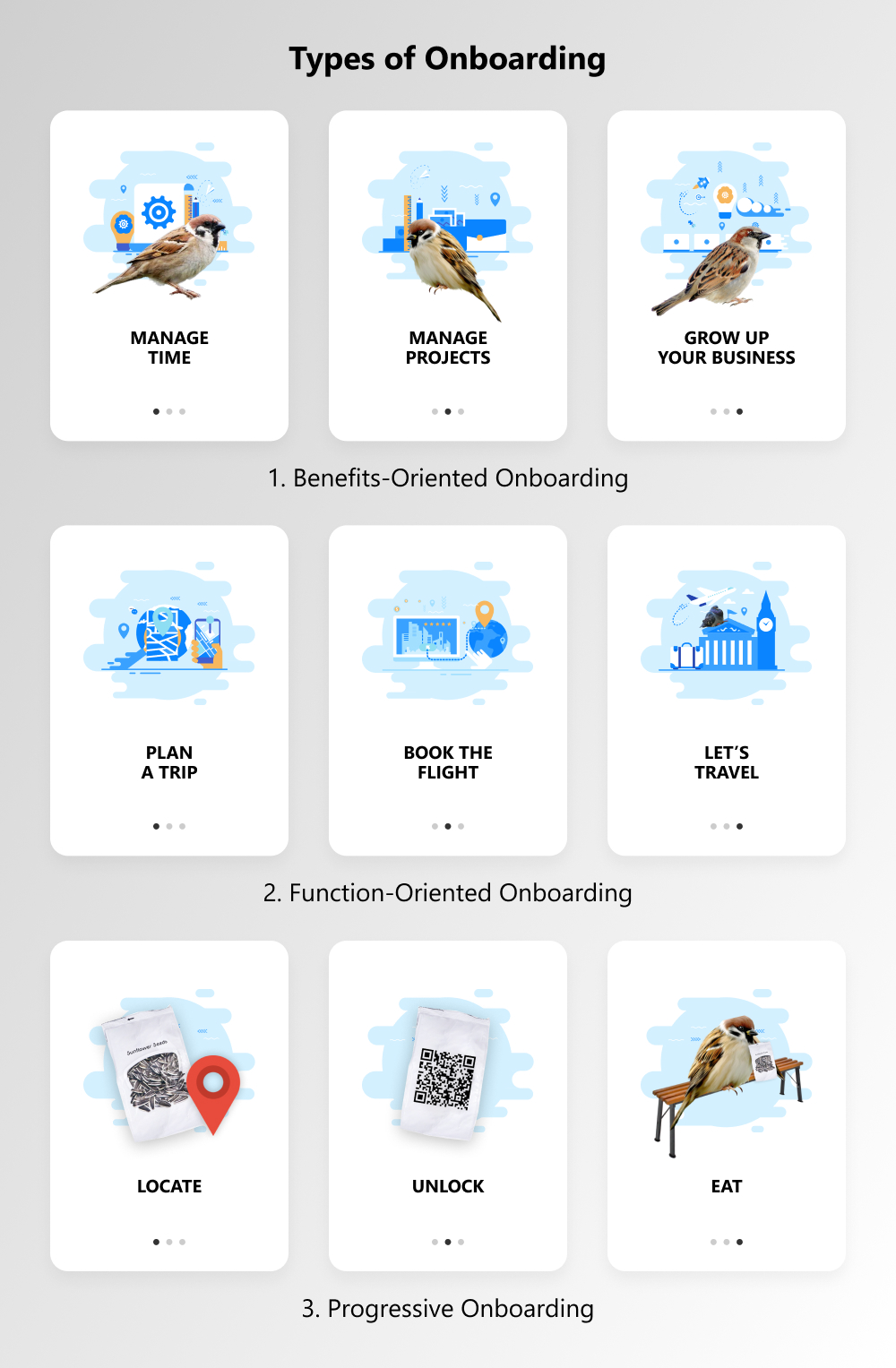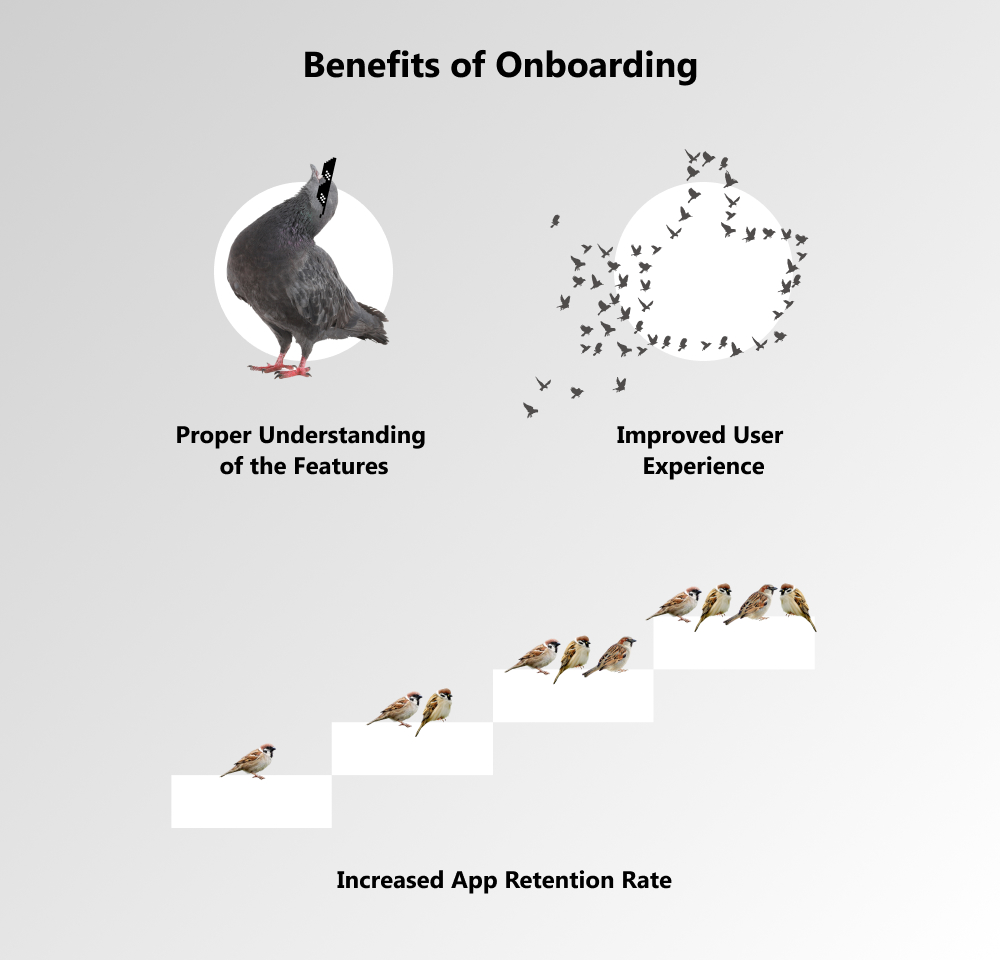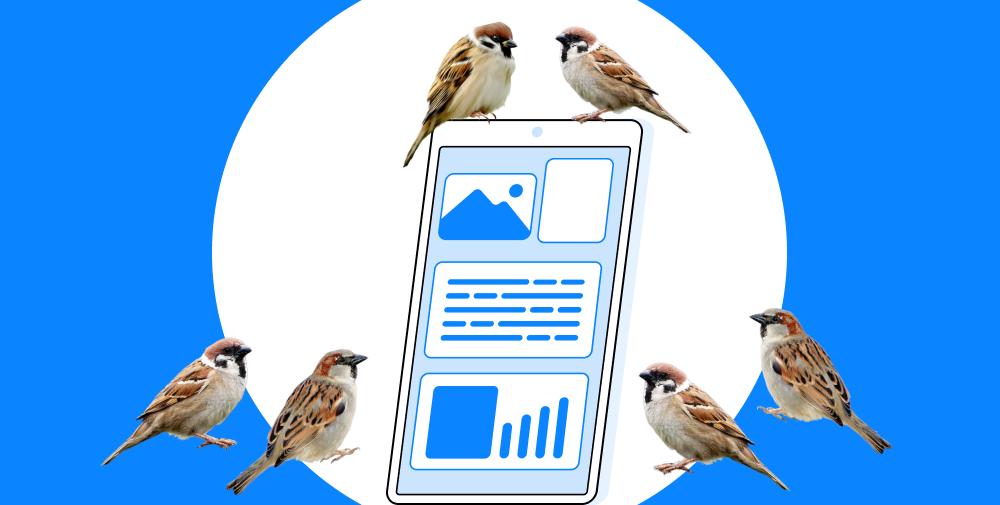According to Statista, 25% of mobile apps are deleted after being accessed just once. Moreover, on average, applications lose around 80% of their daily active users just three days after the installation. These statistics prove that keeping the new users’ interest is one of the most challenging tasks. And one of the most crucial factors influencing it is the first experience a user gets with a new app. This is why we decided to have a look at the mobile app onboarding best practices that can help to increase new app user retention rates.
According to Statista, 25% of mobile apps are deleted after being accessed just once. Moreover, on average, applications lose around 80% of their daily active users just three days after the installation. These statistics prove that keeping the new users’ interest is one of the most challenging tasks. And one of the most crucial factors influencing it is the first experience a user gets with a new app. This is why we decided to have a look at the mobile app onboarding best practices that can help to increase new app user retention rates.
Contents
What Is Mobile App Onboarding and Why Is It Important?
There is always only one chance for the first impression and, when it comes to mobile apps, the first impression is what might turn a first-time user into a full-time user, an interested person into a customer. Furthermore, as the number of available applications is constantly growing, users turn more demanding and picky, while also less patient, as they always can find an easier-to-use alternative. Therefore, a good mobile app onboarding process that demonstrates the product’s value and keeps users engaged is crucial in building a permanent relationship with the brand’s new customers. However, before we dive into exploring the mobile app onboarding best practices, let’s have a look at the process itself and why it matters so much.
Mobile app onboarding is the first user’s experience with the application they have just downloaded and opened for the first time, the main goals of which are user activation and retention. It means that the process is aimed at demonstrating the product’s value and exploring main features in several simple steps, whilst also encouraging a new user to return and use the app again.
There are three main types of mobile app onboarding.
1. Benefits-Oriented Onboarding
This type of app onboarding, as the name implies, is focused on displaying the value and benefits the product has to offer without going into details on how to use the app.
2. Function-Oriented Onboarding
This approach, in contrast to the above one, is directed at demonstrating the functionalities of the app and teaching a user how to operate it. It usually includes a demo guiding the person through the most common actions.
3. Progressive Onboarding
Progressive app onboarding takes the practical approach of navigating users through the app step-by-step, with the help of little tips appearing on the screen throughout the process. This way the information is displayed in relevance with the specific page and it encourages the user to take further necessary actions.
As mentioned earlier, designing an engaging onboarding flow is crucial for the app’s success, especially considering the high mobile app abundance rate we see nowadays. Among the many benefits mobile app onboarding brings, we would like to highlight three main ones.
1. Proper Understanding of the Features
Even though the goal of each UX designer is to make the application as intuitive as possible, sometimes it still takes a while before app users manage to make themselves familiar with all the features and find their way to accomplish certain tasks. Moreover, it also happens that the approach they choose is not the most efficient one provided by the application. This is when app onboarding steps in by guiding a new customer through the features and demonstrating the best approaches, preparing them to take full advantage of the product.
2. Improved User Experience
Teaching users how to use the application to its fullest potential by demonstrating its features in a few comprehensible steps significantly increases user satisfaction levels. Moreover, app onboarding is meant to build a connection between the brand and new users, so it’s not only about making it easier for the customer to use the application but also about making it enjoyable for them.
3. Increased App Retention Rate
Both of the above advantages add up to each other and contribute to the most valuable (and measurable) benefit for the app owners — customer retention rate. Well-done onboarding is aimed at being engaging enough to hook a new user to the mobile app and convince them to keep using it constantly in the future.
However, mobile app onboarding is not mandatory in 100% of the cases. There are simple applications with self-explanatory features, for which onboarding might appear overwhelming and unnecessary and make the opposite to the expected impression. Meanwhile, there are also mobile apps for which onboarding is a necessity that they cannot afford to skip. These are:
- mobile apps introducing a unique interaction that users are possibly unfamiliar with;
- applications with a complex workflow that are meant to handle more complex issues (e.g. financial mobile apps);
- apps presenting a brand new concept with its own rather unique workflows and features that might differ from standard patterns used in other applications;
- mobile applications that have been redesigned and, therefore, proper re-introduction for new, as well as existing, users is necessary.
App Onboarding Best Practices
Now that we are more familiar with the concept of mobile app onboarding and its benefits, it is time to look at the best practices that we would like to recommend to increase the chances of turning the one-time user into a full-time one.
1. Essential Details Only & Convenient Signup Process
Mobile app users often operate their apps on the go and can be quite impatient, wanting to start using their newly uploaded product as soon as possible. In fact, 72% of the users think that app onboarding should not take longer than one minute of their time. Therefore, it is crucial to make the onboarding process quick and efficient and ask only for the necessary information. In other words, create the path of least resistance: simple signup process, drop-down menus, essential details only and accesses required (possibly with the explanation of why it is mandatory), etc. The signup process can be done easier via the option of using linked social media accounts or, as WhatsApp does, use automated detection of SMS, so that users don’t need to leave the application to check their verification code.
2. Less Is More
We’ve all been in a situation when we got overwhelmed by the amount of information presented on the screen and thoughtlessly pressed the “next” button, maybe not just once. It is crucial to keep a single screen precise, focused and coherent, while also reduce the number of screens to the necessary minimum to not overload (and, consequently, lose) a new user.
3. Value First
It is essential to put the user’s needs first during any process, including onboarding, as meeting those needs is what makes an app successful. Therefore, the introduction should focus on demonstrating how the product will improve the customer’s life, what value it will bring to them; make sure they will not keep searching for a different, more suitable mobile app. Furthermore, it is also vital to not disappoint the customer and live up to their expectations, which is why the presented value should also be realistic.
4. Right Timing Is Crucial
Sometimes it is worth waiting before asking a user for permissions, such as push notifications, certain accesses, and personal and billing information, as it can be overwhelming or come out as overstepping. It is often more effective to do it after they got more familiar with the app and its purpose and when it has become more clear what particular permission is needed for. As a matter of a fact, 82% of users consider it important to know the “why”, before granting permission.
5. Keep It Interactive & Animated
The best way to keep users engaged is to make the process of exploration interactive and entertaining. This concept is especially suitable for more complex applications, requiring the progressive type of onboarding. In gaming apps, for example, it is very common to let a new user play and get familiar with the app, while guiding them with popup tips step-by-step. One of the other great examples is the Slack messaging platform, which uses a chatbot to walk a new customer through the main features and ask them for further information. Interactions and animations help to build a connection with the user, as they can invoke an emotional response; however, it is important to not cross the line and avoid irritating the app user with too much action on the screen.
6. “Skip” Option
For some users, the possibility of skipping the onboarding is precisely the experience they need to keep using the app, as they would prefer to explore it on their own. Hence, there should be such a choice provided, and it should be provided not only at the start of the onboarding but on every screen so that it is possible to quit onboarding at any moment. It also applies to certain required actions that can be accomplished later on, without affecting the initial app exploration.
7. How Much Left?
Another simple but very influential function to be included in the mobile app onboarding is the progress bar. Knowing how many more steps are left before the goal is achieved or before it is finally possible to enjoy the new app can motivate users to accomplish the onboarding in the first place.
8. Wow! & Aha! Effects
Pleasantly surprised “wow” and satisfied with the discovery “aha” are both fairly strong human emotions that can trigger a connection between the user and the application. A striking piece of information, impressive interaction, guidance to the final point of understanding the functionality, or a simple compliment after completing a task can all lead to a more engaging user experience.
9. Personality & Personalization
Onboarding is a part of the application and, therefore, it is essential to present the product’s personality and follow brand identity already during this introductory process to create a desirable first impression.
Furthermore, personalized experience is what wins a customer’s heart and builds attachment. It can be achieved through customization of the user’s preferences (as done by Netflix and Spotify), tailored messages based on user segmentation, or a personal touch achieved through certain features.
10. Test & Measure
Last but not least, the onboarding process is as valuable as the app itself; thus, its testing and improvement, according to the received feedback, are valuable too. Furthermore, users’ reactions, success rates after onboarding, and other metrics can provide some valuable insights on how to adjust the process to achieve higher retention rates.
Well-implemented mobile app user onboarding can make all the difference when it comes to user retention. If you are looking for specialists to help you with creating the onboarding process for your product, we will be happy to share our expertise. Please contact us directly or visit our website.












